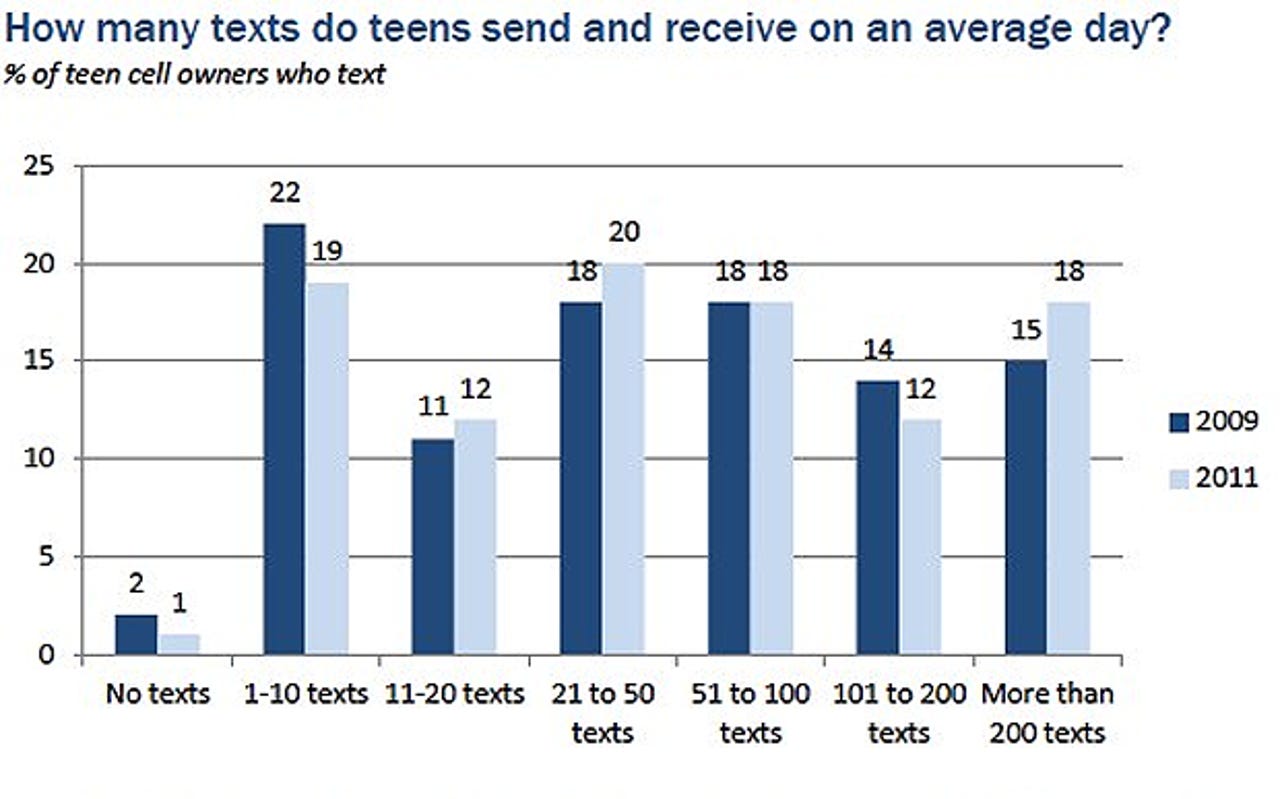U.S. teens: Texting more, talking less

The latest report from the Pew Internet & American Life project has concluded something we often suspect -- where text-based communication is on the rise, real-time phone usage among the younger generations is on the decline.
Nearly 800 U.S. teens, aged 12 to 17, were participants of this survey, as well as their parents. The survey was conducted between April and July 2011. Seven focus groups compromising of 57 teenagers were also involved, and the margin of error is set at 4.8 percentage points.
The report, called "Teens, Smartphones & Texting", says that teenagers are now sending an average of 60 text messages a day -- a jump of 20 percent since 2009, whereas the number who use their device in order to talk has fallen.
The survey also found:
- 75 percent of teenagers use text messaging in some form or another.
- 63 percent said that they exchange text messages every day.
- In comparison, only 39 percent stated they talked with people on the phone every day.
- Only 14 percent of teens say they talk daily on a landline phone.
- 6 percent use e-mail daily.
Older teenage girls still reign in terms of being the 'most enthusiastic' texters, as the survey found they send on average double the amount of texts as teenage boys. However, boys of all ages are using text-based communication more; especially within the African-American bracket -- who send an average of 80 text messages per day.
The 14-17 age bracket showed a rapid surge in texting activity; from a median 60 texts a day in 2009 to a staggering 100 texts a day last year.
Unsurprisingly, 77 percent of teenagers in the United States own a phone. The majority use 'standard' phone models, whereas 23 percent between the ages of 12-17 own a smartphone, although this number is on the rise.
Ownership among 12-13 year olds has dropped, which may be due to the increased privacy and security concerns of their parents. 66 percent stated they owned a phone in 2009, whereas only 57 percent possessed a device last year.
This latest study, in addition to many others, implies what we already know -- that there is a gradual shift in the way we communicate. Text-based, immediate communication is a commonplace event in Western society -- and both future businesses and individuals in society will have to compensate.

Image credit: Pew research institute
Related: